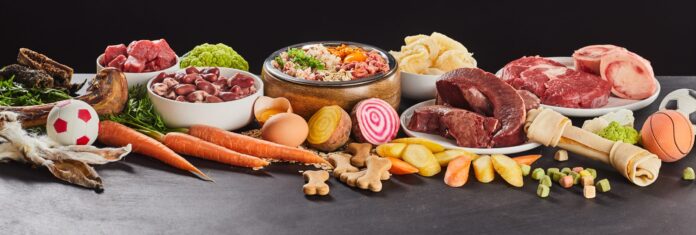The Importance of Balanced Homemade Diets for Pets
A Board Certified Veterinary Nutritionist® plays a crucial role in designing customized homemade diet recipes for pets with specific health issues or for owners opting to avoid commercial pet foods. Although the nutritional needs of pets can be intricate, many pet owners encounter misunderstandings and errors when implementing these homemade diets. This article delves into frequent misconceptions and mistakes that arise, particularly after pet owners have received their tailored recipes from veterinary nutritionists.
Common Misconceptions About Homemade Pet Diets
1. Confusing Volume with Caloric Needs
One common challenge pet owners face is equating the volume of food with the caloric content. After receiving a homemade diet recipe, pet owners often question the quantity of food, which may appear less or more than anticipated based on previous feeding routines. It is vital to understand that homemade diets are meticulously formulated to meet the caloric needs of the pet, based on dietary history or established nutritional guidelines.
- For instance, commercial dry dog food typically contains 300-400 calories per cup, whereas homemade diets, such as chicken breast and rice, offer only about 200 calories per cup due to their higher moisture content.
- Consequently, owners may need to provide nearly double the volume of homemade food compared to their usual commercial brand.
2. Underestimating the Role of Protein
Another prevalent misconception is expecting a higher proportion of meat in homemade diets. Commercial dog foods generally consist of 20-28% of calories from protein, while cat food features 28-38%. However, homemade diets may contain a lower volume of protein relative to carbohydrates, leading to perceived imbalances in the recipe.
It’s crucial to adhere to the recipe provided by your veterinary nutritionist, as adjustments may compromise the intended nutritional balance, particularly for pets with health issues requiring specific dietary restrictions.
3. Avoiding Nutritional Supplements
Many pet owners are motivated to cook for their pets due to concerns about specific ingredients found in commercial foods. This leads to the misconception that a nutritionally complete homemade diet can be achieved without supplements. However, just as humans often require dietary supplements to ensure a balanced intake of nutrients, so too do pets.
- The absence of concentrated vitamins and minerals can result in deficiencies, ultimately affecting a pet’s health.
- A research survey at Tufts revealed that only 13% of clients continued to follow their original recipes after 6 to 12 months, with many omitting essential supplements.
4. Changing Cooking Methods or Ingredients
Substituting ingredients or altering cooking methods can significantly affect the nutrient profile of homemade diets. For example:
- Baking potatoes instead of boiling them can increase potassium levels by roughly 20%.
- Using sweet potatoes instead of white potatoes can lead to a 60% increase in caloric content.
Always consult your veterinary nutritionist before making any changes to ensure that the recipe maintains its intended balance of nutrients.
5. Adjusting Ingredients Without Guidance
Pet owners often try to modify recipes in hopes of adjusting caloric intake; however, this may lead to imbalances in the diet’s overall nutrient content. Adjustments should ideally be made proportionally across all ingredients under the guidance of a veterinary nutritionist. Mathematical adjustments, such as increasing every component of the recipe by a percentage, are advisable for maintaining the nutritional integrity of the diet.
Ensuring Your Pet’s Nutritional Needs Are Met
If you are preparing homemade meals for your pet and recognize any of these issues, it’s essential to maintain a dialogue with your veterinary nutritionist. They design these diets with your pet’s health in mind and can assist in troubleshooting any concerns regarding your pet’s dietary regimen.
To maximize the benefits of a consultation with a veterinary nutritionist and ensure the health and well-being of your pet, always disclose your specific dietary preferences and adhere strictly to the provided recipes. Should changes be necessary, consulting your nutritionist is crucial to ensure your pet continues to receive all the necessary nutrients to thrive.











